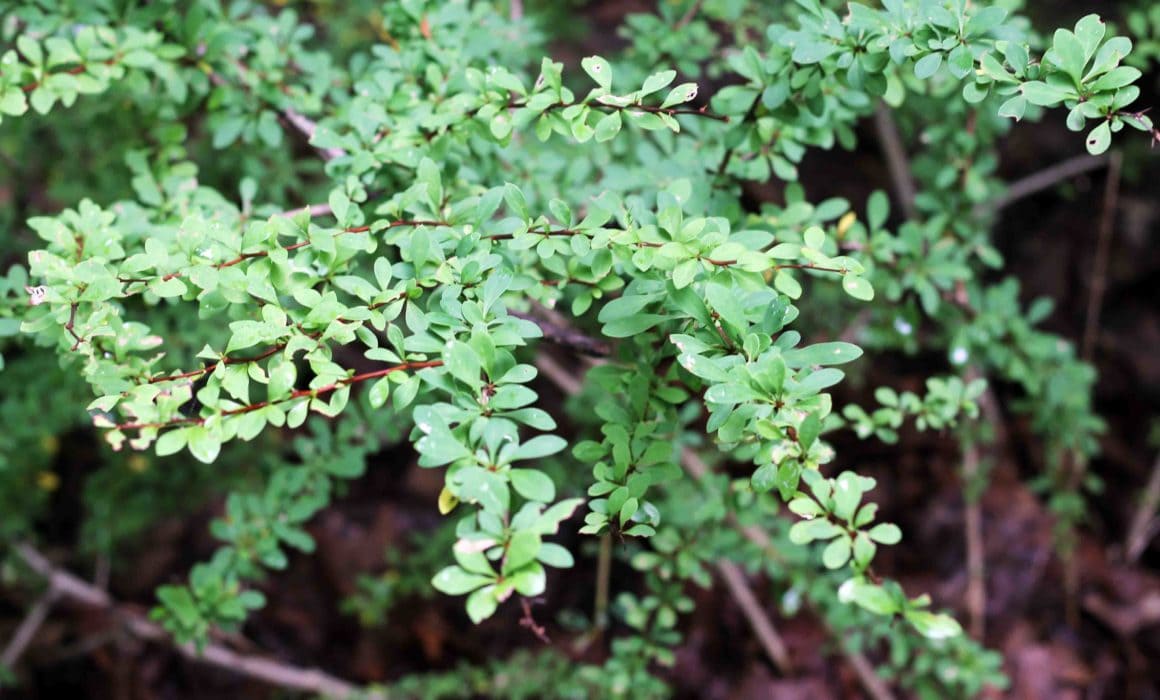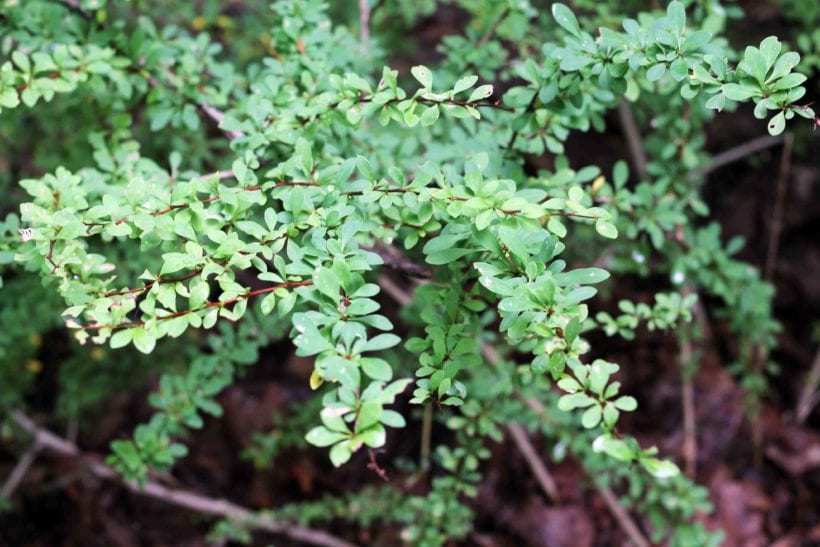Study finds that plants introduced to your garden are escaping and impacting the natural areas around you.
This research contributes to a large body of evidence showing how invasive plants in our natural areas were introduced by residential and commercial landscaping.

Japanese barberry (Berberis thunbergii) is a plant native to Asia. It is commonly found in Teatown’s woods due to its use as a landscaping shrub.
A new study published by the Natural Areas Journal found that when we introduce non-native plants into our gardens they don’t always stay on our property. The authors set out to Fire Island and conducted an experiment in which they tried to answer the question: are the non-native and invasive plants on residents’ properties spreading to undeveloped woodland areas close by?
To answer this question they first looked at the plants present in residential properties that were in close proximity to the undeveloped woodland. Then, they looked at the species present in the woodland and compared the two groups. What they found was that the non-native and invasive species located on the edges of the woodlands were almost identical to those being used by homeowners on their own properties, meaning that the properties adjacent to the woodland were most likely responsible for introducing these invasive plants.
What is the difference between native, nonnative, and invasive species?
Native species are species that have evolved over time to local conditions here at home. They play a crucial role in the local ecosystem by providing habitat, food, or some other service that contributes to the region’s biodiversity. Importantly, they have ecological “checks and balances” to keep them under control.
Non-native and invasive species are species that have not evolved under local conditions, but have instead been introduced to us from somewhere else in the world. Sometimes, these species stay localized because something here continues to keep them in check, and we consider those controlled species “non-native.” Oftentimes, though, these introduced species leave their checks and balances behind, and they spread uncontrollably once planted. We classify spreading introduced species as “invasive.”
While non-native species did not evolve locally, they don’t seriously disrupt biodiversity or out-compete native species because they stay localized. Invasive species, on the other hand, reduce biodiversity because they become very abundant and reduce the proportion of native species in an area.
What does this mean?
It means that when we choose to landscape and garden with non-native and invasive plants, we could be putting nearby natural areas at risk of foreign plant invasions.
Landscaping with non-native and invasive plants is commonplace, as these plants are often sold in nurseries and may hold desirable characteristics like resistance to deer, seasonal resilience, ornamental beauty, and quick growth. But when we introduce species that did not naturally evolve to have a place in the local ecosystem, we can unintentionally cause disruption to the natural processes going on around us.
So what’s the solution?
The authors found that “increased native biodiversity confers resistance to invasion,” which means that the more native plants we have in an area, the less likely that area is to become invaded. The most important thing we can do is to remove the invasive plants from our homes and gardens, and fill those spaces with native species that play a role in our region’s ecosystem.
Hear from us
Sign up to receive our bi-weekly eNewsletter


